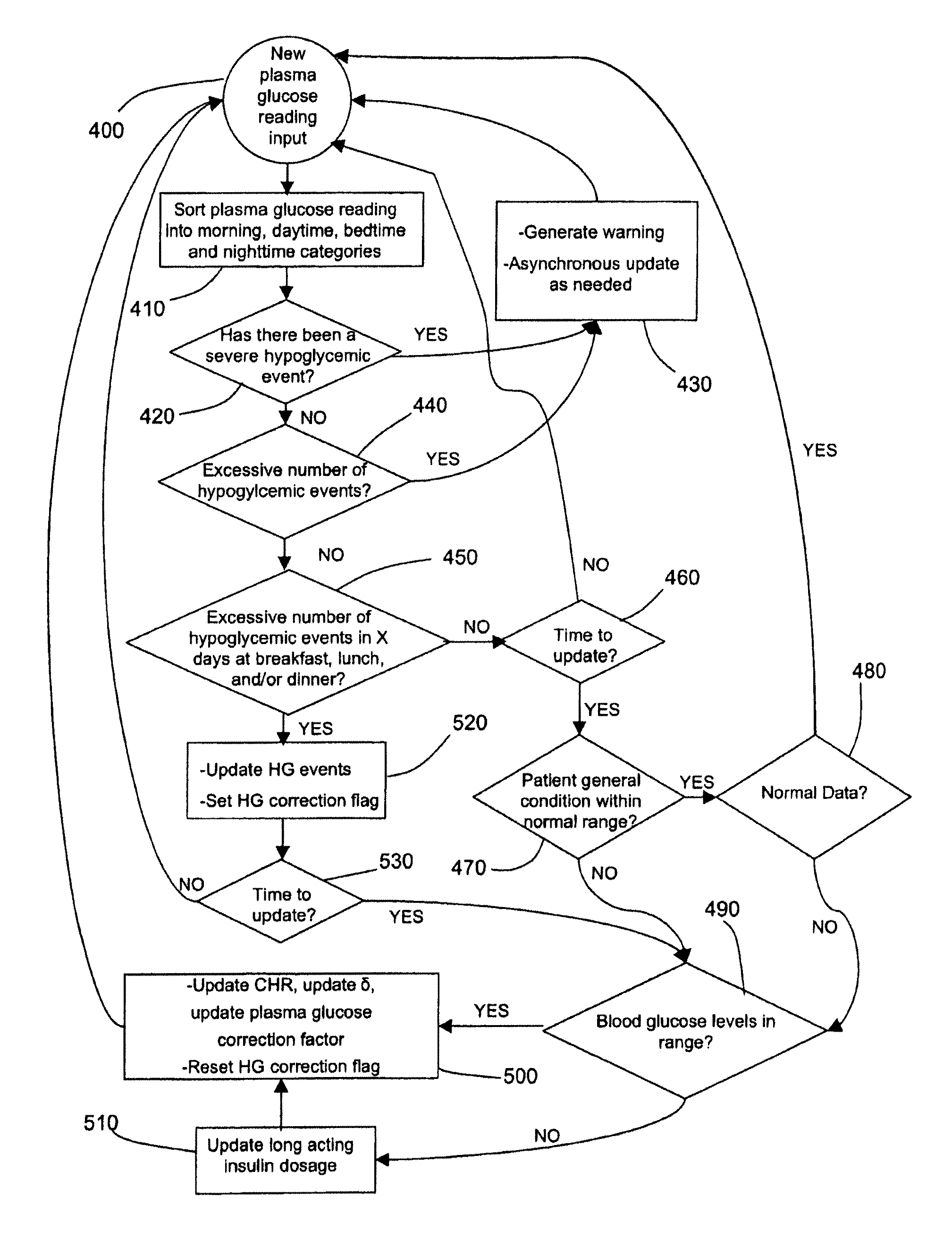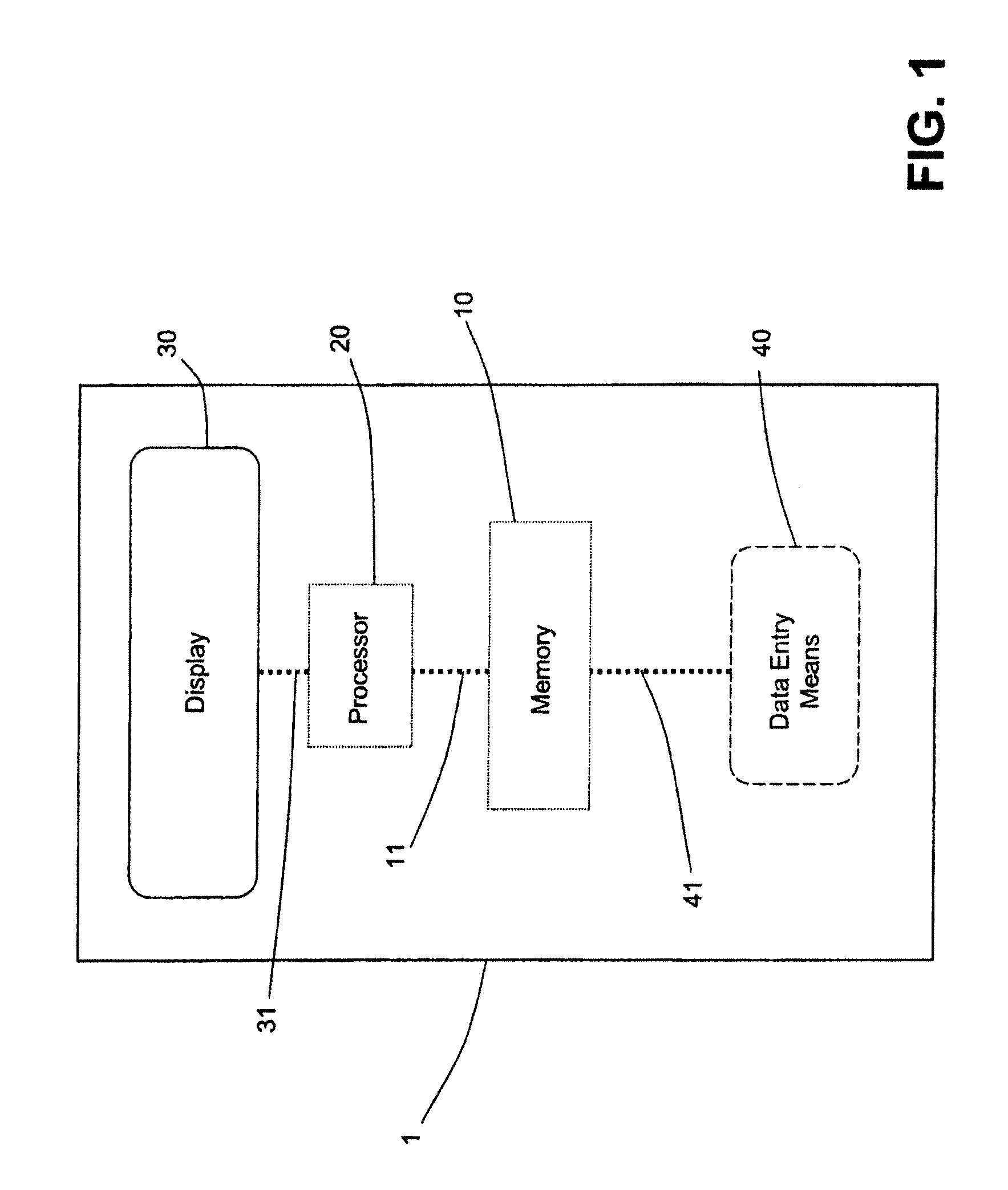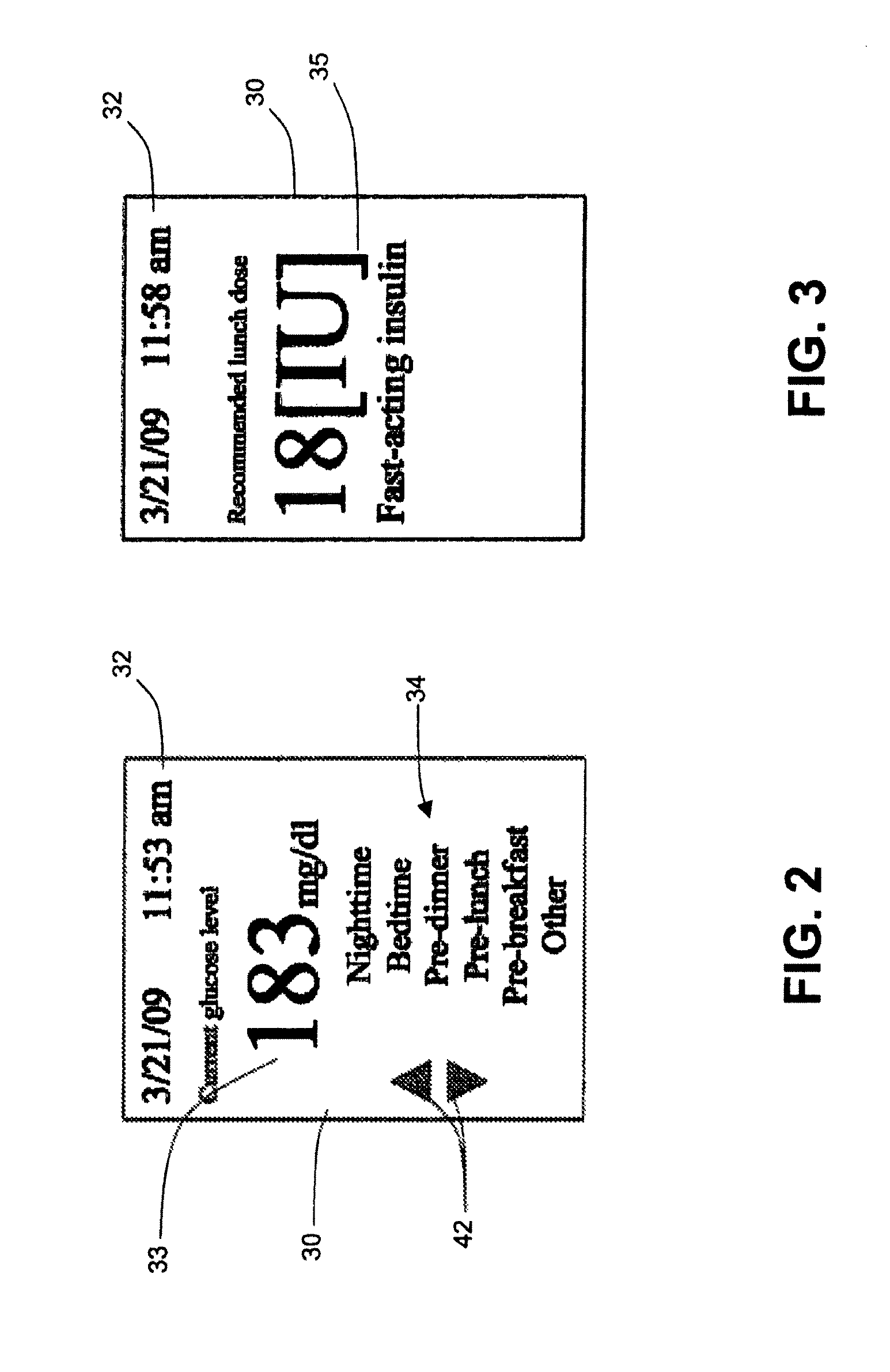System for optimizing a patient's insulin dosage regimen
a diabetes patient and insulin dosage technology, applied in the field of system for optimizing the insulin dosage regimen of a patient, can solve the problems of endocrine pancreas gradually failing to meet the increased insulin demand, affecting unable to apply the trend to achieve the effect of improving the maintenance of the disease,
- Summary
- Abstract
- Description
- Claims
- Application Information
AI Technical Summary
Benefits of technology
Problems solved by technology
Method used
Image
Examples
Embodiment Construction
[0041]As required, detailed descriptions of exemplary embodiments of the present invention are disclosed herein. However, it is to be understood that the disclosed embodiments are merely exemplary of the invention, which may be embodied in various and alternative forms. The accompanying drawings are not necessarily to scale, and some features may be exaggerated or minimized to show details of particular components. Therefore, specific structural and functional details disclosed herein are not to be interpreted as limiting, but merely as a providing a representative basis for teaching one skilled in the art to variously employ the present invention.
[0042]Turning now to the drawings, wherein like numerals refer to like or corresponding parts throughout the several views, the present invention comprehends a system for optimizing the insulin dosage regimen in diabetes patients over time—such as in between clinic visits—to thereby enhance diabetes control.
[0043]As used herein, the term “...
PUM
 Login to View More
Login to View More Abstract
Description
Claims
Application Information
 Login to View More
Login to View More - R&D
- Intellectual Property
- Life Sciences
- Materials
- Tech Scout
- Unparalleled Data Quality
- Higher Quality Content
- 60% Fewer Hallucinations
Browse by: Latest US Patents, China's latest patents, Technical Efficacy Thesaurus, Application Domain, Technology Topic, Popular Technical Reports.
© 2025 PatSnap. All rights reserved.Legal|Privacy policy|Modern Slavery Act Transparency Statement|Sitemap|About US| Contact US: help@patsnap.com



